How to Grow Azaleas
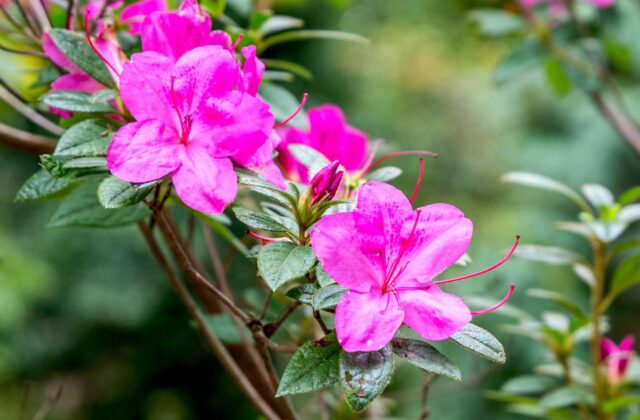
Introduction
Azaleas, with their vibrant blooms and lush foliage, have long captivated the hearts of gardeners and nature enthusiasts alike. For those yearning to enhance their outdoor oasis with bursts of color and natural beauty, the mantra is simple: grow azaleas. These exquisite flowering shrubs, belonging to the Rhododendron genus, adorn landscapes with a kaleidoscope of colors, ranging from delicate pastels to fiery hues. Originating primarily from Asia and North America, azaleas have established themselves as quintessential fixtures in gardens around the world.
These resilient plants thrive in acidic soils and prefer partial shade, making them versatile additions to various garden settings. Whether nestled beneath the canopy of trees or adorning the edges of pathways, azaleas infuse any space with their unmatched charm and elegance. With proper care and attention, these enchanting shrubs reward gardeners with bountiful blooms year after year. So, whether you’re a seasoned horticulturist or a novice enthusiast, remember: grow azaleas, and watch your garden blossom into a masterpiece of floral splendor.
Azalea Varieties
Azaleas encompass a wide variety of species and hybrids, each with its unique characteristics. Here’s a detailed overview of some common types of azaleas and their defining features:
Deciduous Azaleas
- Characteristics: Deciduous azaleas shed their leaves in the fall, revealing spectacular autumn foliage. They typically bloom in spring, showcasing large, trumpet-shaped flowers in vibrant hues of orange, yellow, pink, and white. These azaleas often have a strong fragrance, adding another dimension to their appeal.
- Varieties: Some popular deciduous azalea varieties include Rhododendron calendulaceum (Flame Azalea), Rhododendron canescens (Piedmont Azalea), and Rhododendron prinophyllum (Roseshell Azalea).
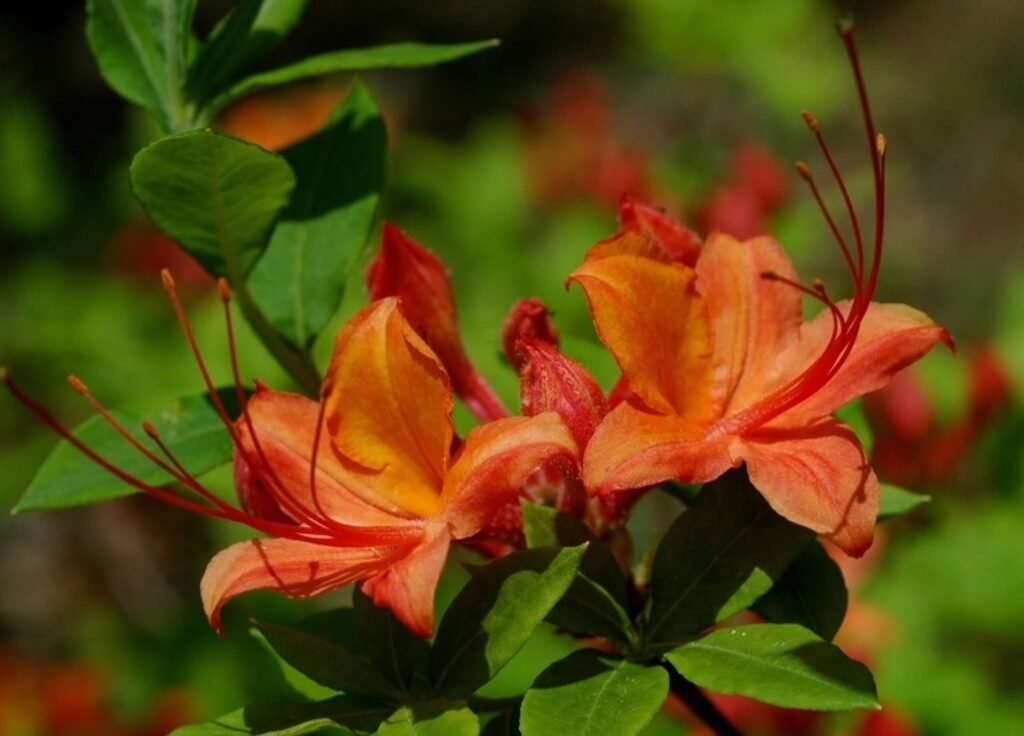
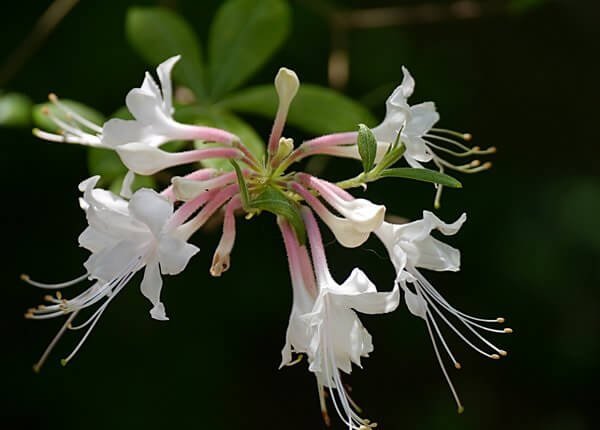
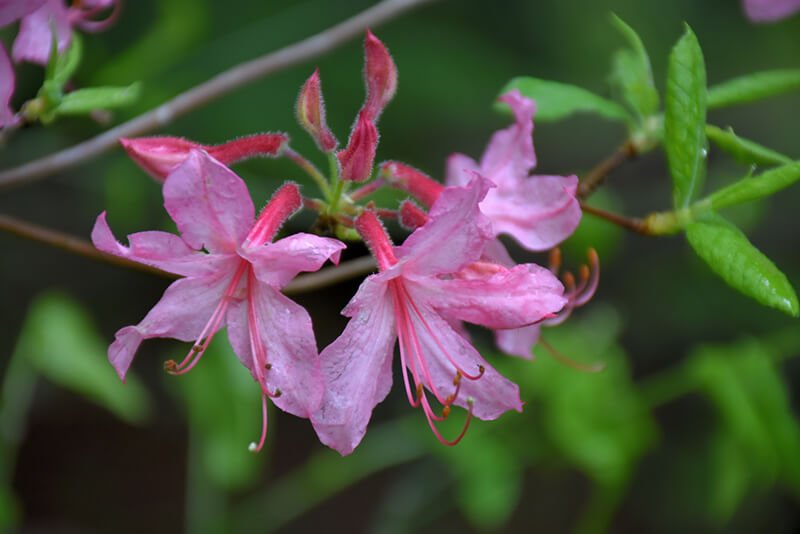
Evergreen Azaleas
- Characteristics: Evergreen azaleas retain their glossy green foliage year-round, providing continuous interest in the garden. They typically bloom in spring, although some varieties may offer sporadic blooms throughout the year. Flowers come in a wide range of colors and can be single or double-flowered.
- Varieties: Common evergreen azalea varieties include Rhododendron indicum (Indian Azalea), Rhododendron obtusum (Kurume Azalea), and Rhododendron simsii (Sims Azalea).
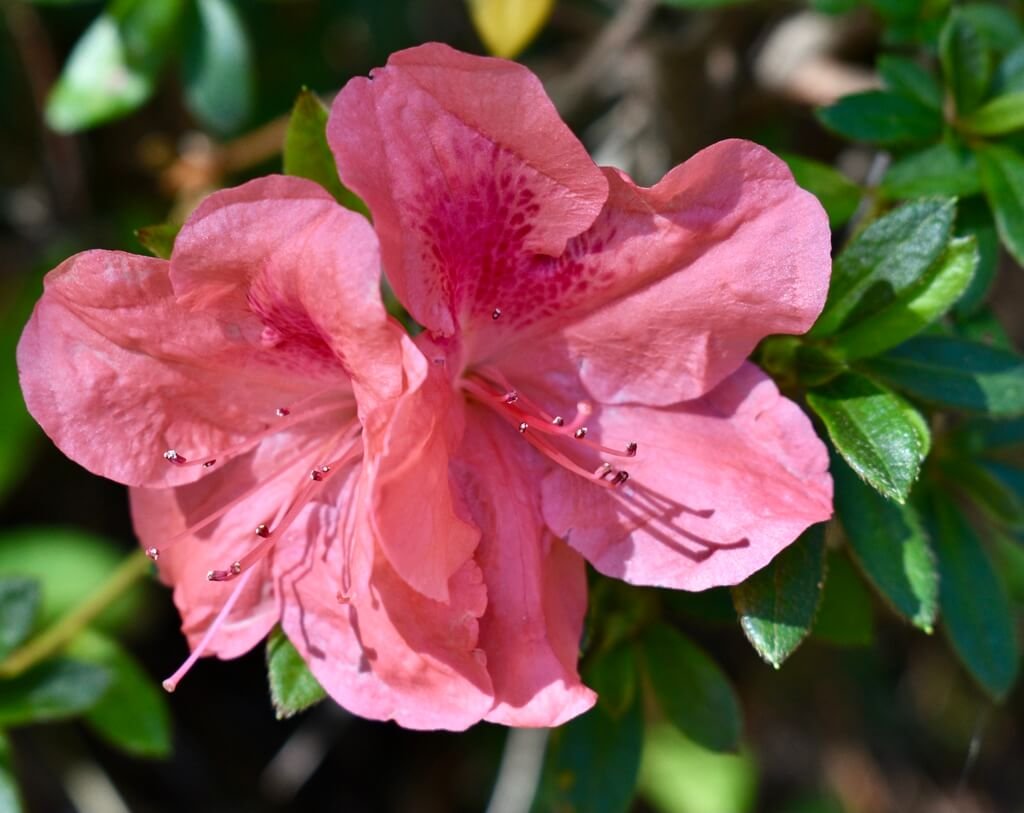
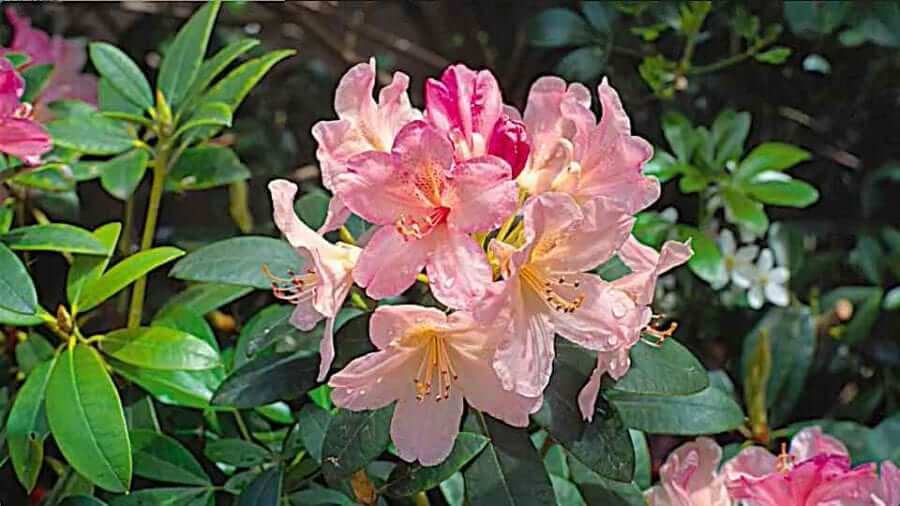
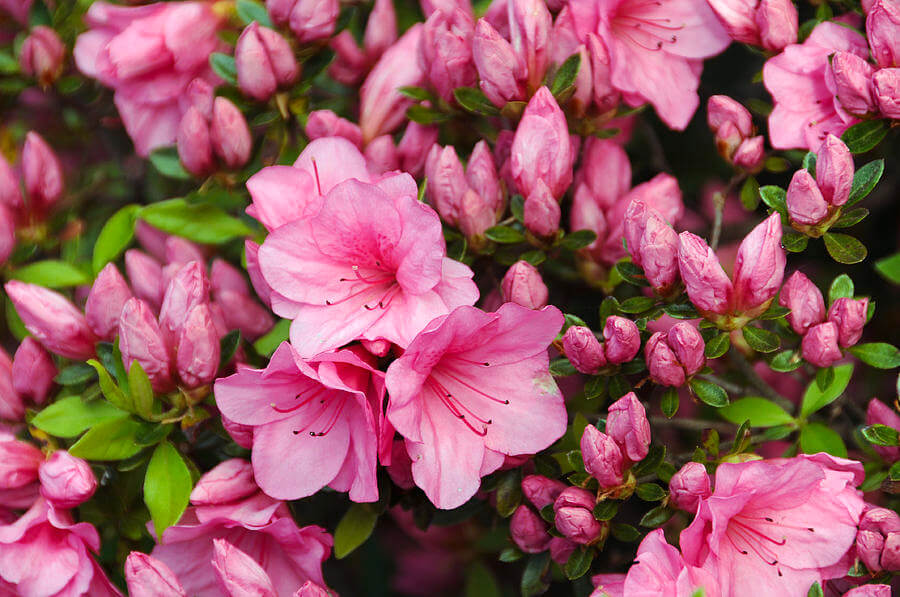
Dwarf Azaleas
- Characteristics: Dwarf azaleas are compact in size, making them ideal for smaller gardens, borders, or container planting. Despite their small stature, they produce an abundance of blooms, often covering the entire plant during the flowering season. These azaleas come in various colors and are prized for their neat, low-maintenance growth habits.
- Varieties: Examples of dwarf azaleas include Rhododendron ‘PJM’ hybrids, Rhododendron ‘Gumpo’ hybrids, and Rhododendron ‘Hino Crimson’.
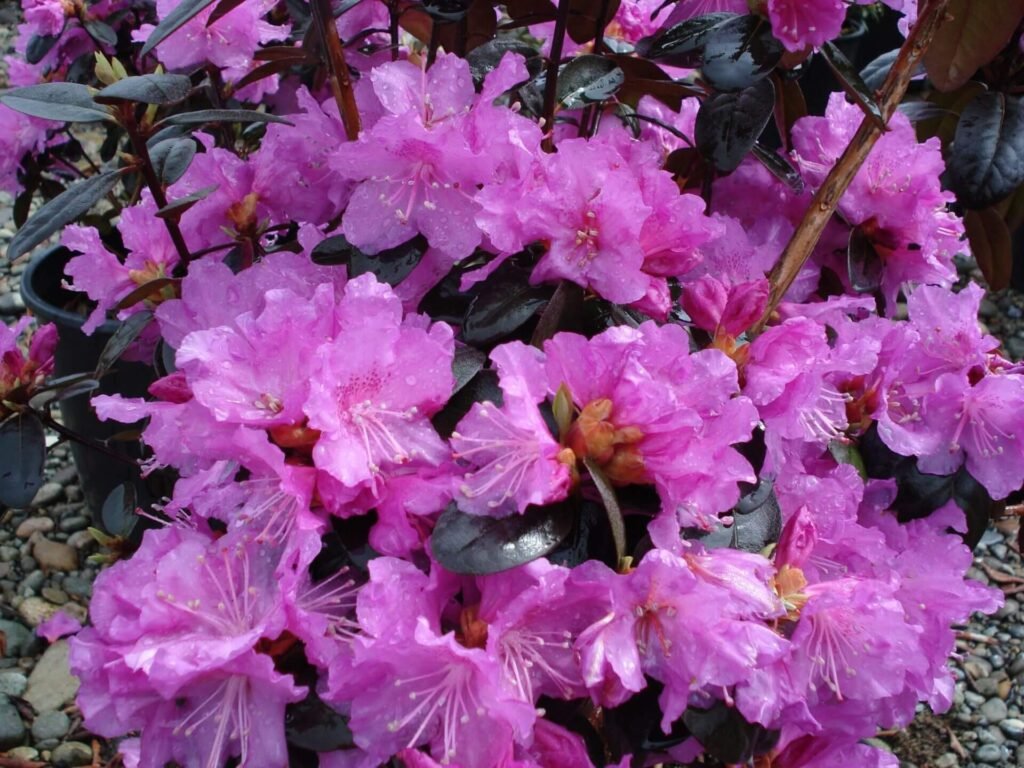
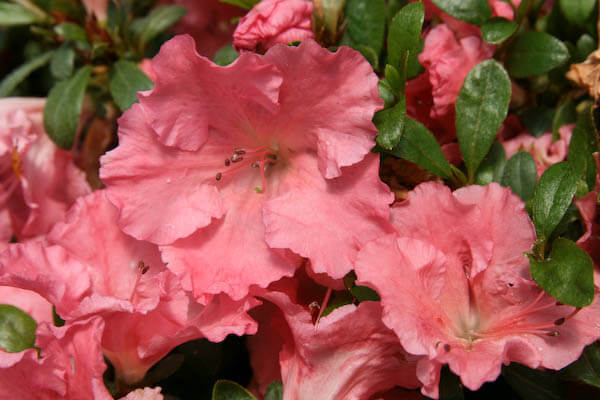
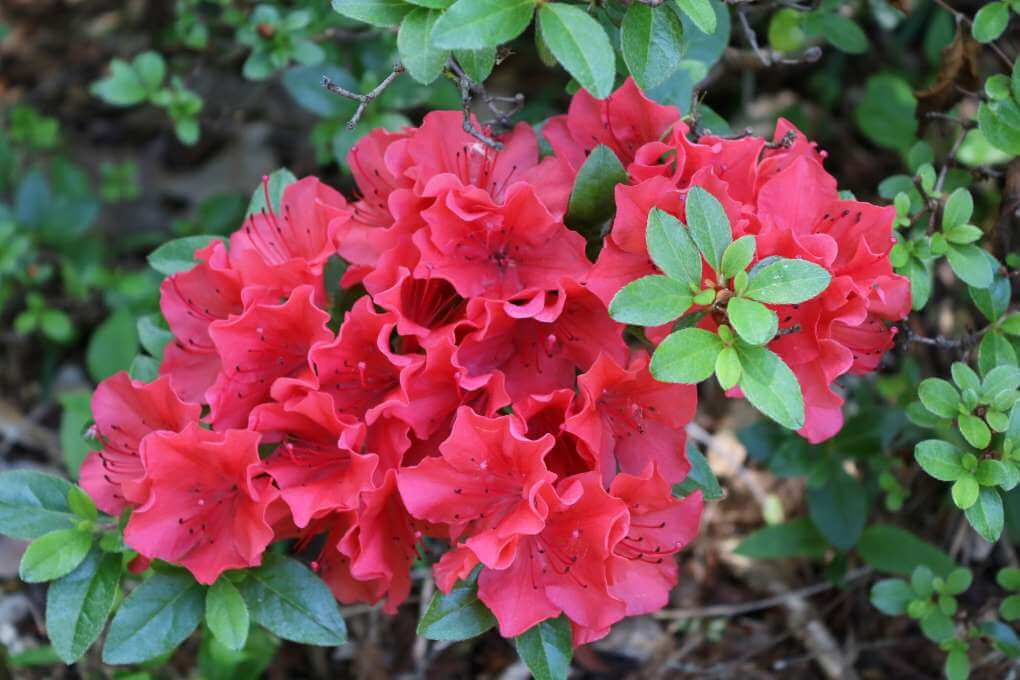
Satsuki Azaleas
- Characteristics: Satsuki azaleas are a group of evergreen azaleas native to Japan, prized for their exquisite flowers and bonsai potential. They bloom later in the spring or early summer and often feature multi-colored, semi-double or double flowers with intricate patterns. Satsuki azaleas come in a wide range of flower colors and are revered for their beauty and cultural significance.
- Varieties: There are numerous Satsuki azalea cultivars, each with its own unique flower color and pattern, including varieties like ‘c’, ‘Kurume’, and ‘Higasa’.
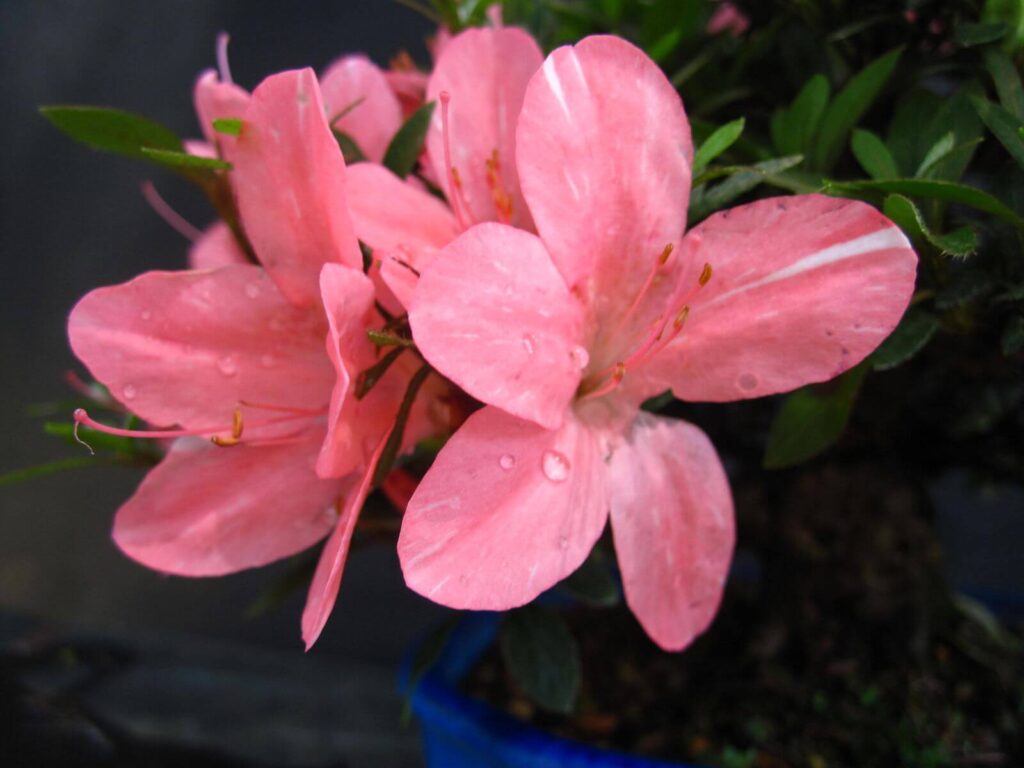
Hybrid Azaleas
- Characteristics: Hybrid azaleas are the result of crossbreeding different azalea species to create new varieties with desirable traits such as flower color, size, and cold hardiness. These hybrids offer a wide range of flower colors, growth habits, and bloom times, catering to diverse garden preferences.
- Varieties: Hybrid azaleas encompass a vast array of cultivars, including popular series like Encore® Azaleas, Southern Indica Azaleas, and Glenn Dale Azaleas.
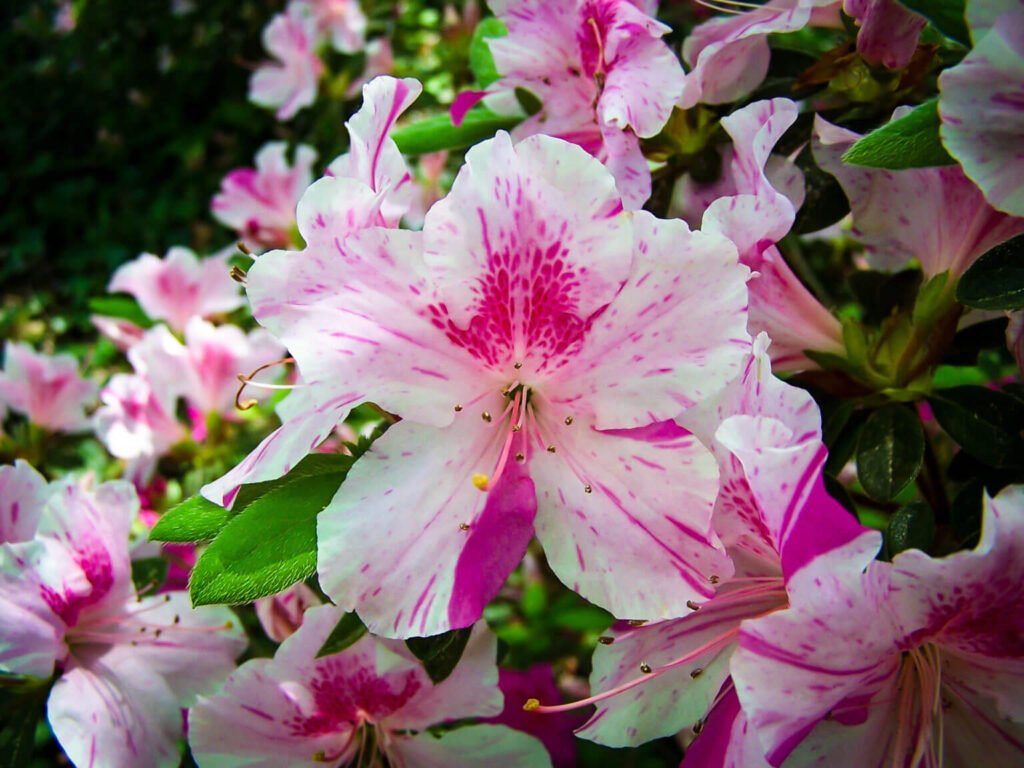
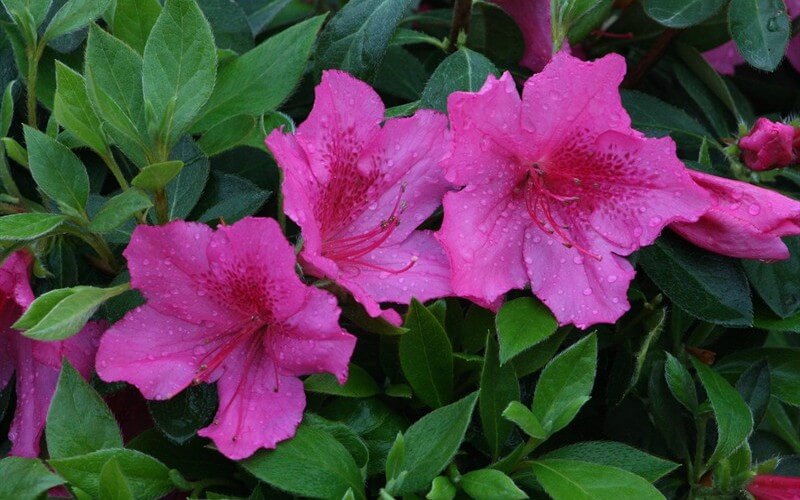
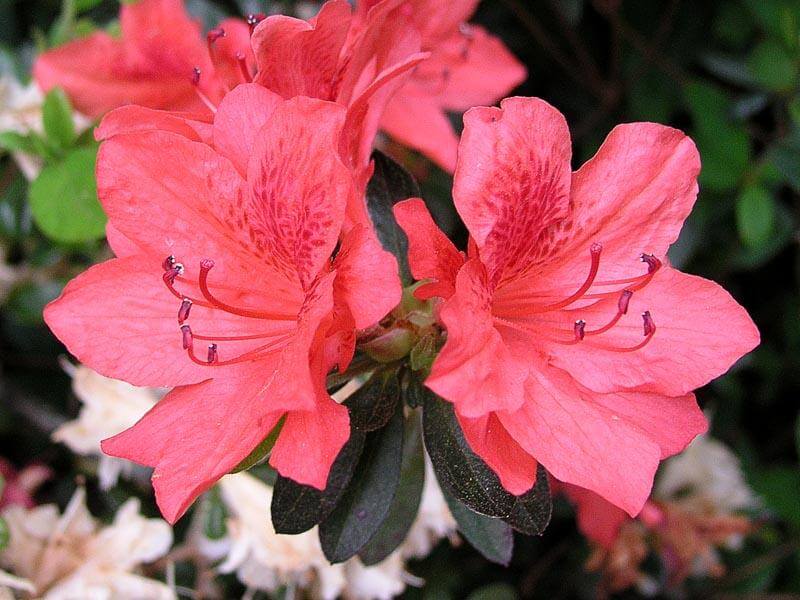
Each type of azalea brings its beauty and charm to the garden, offering endless possibilities for creating stunning displays and landscapes. By selecting the right types to suit your climate, soil, and aesthetic preferences, you can enjoy the splendor of azaleas throughout the seasons.
Factors to Consider When Selecting Azalea Varieties
- When venturing to grow azaleas, it’s crucial to begin by assessing your local climate and soil conditions. Different azalea varieties thrive in different environments, so understanding your specific conditions will help you choose the most suitable options.
- Additionally, consider the intended purpose of the azaleas – whether it’s for ornamental use, creating hedges, or container gardening. Each purpose may require a different variety or characteristic.
- It’s also essential to take note of any specific pest or disease resistance traits that may be important for maintaining healthy azalea plants. Consulting with local nurseries or horticulturists can provide valuable insights, helping you make informed decisions about the best azalea varieties suited for your specific needs.
Ideal Growing Conditions
Azaleas thrive in filtered sunlight with some shade during the hottest part of the day, making them perfect for planting under tall trees or on the east side of a building. It’s essential to ensure that they are in well-drained, acidic soil with a pH range between 4.5 and 6.0. Incorporating organic matter like pine bark or compost can aid in maintaining these optimal growing conditions. Consistent moisture, without waterlogging, is crucial to grow azaleas, as they are sensitive to both drought and excessive watering. To help retain moisture, regulate soil temperature, and suppress weed growth, applying a layer of mulch around the base of azalea plants is highly beneficial and promotes healthy growth.
Optimal Sunlight and Shade for Azaleas
Azaleas generally require about four to six hours of direct sunlight each day but benefit from partial shade during the intense midday sun to prevent leaf scorching. It’s essential to avoid planting azaleas in areas with prolonged exposure to harsh afternoon sunlight, as this can lead to stress and reduced flowering potential. Filtered sunlight provided by tall trees or structures allows azaleas to thrive while protecting them from the detrimental effects of full sun exposure. Striking a balance between light and shade is crucial for maintaining healthy foliage and promoting vibrant blooms in azalea plants. This careful management of sunlight exposure plays a significant role in the overall health and beauty of these stunning flowering shrubs.
Soil Composition and pH Levels for Azalea Cultivation
Azaleas thrive in soil that is loose, well-aerated, and rich in organic matter such as peat moss, pine bark, or compost, ensuring proper drainage and nutrient availability. It’s essential for the soil to fall within the acidic pH range of 4.5 to 6.0, and regular testing can guide necessary adjustments through applications of sulfur or lime. Amending clay soils with organic materials is crucial to improve their texture and drainage capacity, creating an optimal environment for healthy azalea root development. Maintaining suitable soil composition and acidity levels is vital for supporting robust root systems and overall plant health in azalea cultivation, ultimately contributing to the thriving beauty of these delightful flowering shrubs.
Proper Watering Techniques for Azaleas
Watering azaleas early in the morning is a beneficial practice as it allows the foliage to dry before evening, thus reducing the risk of fungal diseases. In addition to watering habits, mulching around azaleas can play a key role in retaining soil moisture and regulating temperature, creating optimal growing conditions for these beautiful shrubs. It’s also worth considering the use of rainwater for watering as it is slightly acidic and free from the chemicals often found in tap water, which can have adverse effects on azalea health. Finally, adjusting the watering frequency based on weather conditions is essential; increasing it during hot, dry spells and decreasing it during cooler, wetter periods helps maintain the well-being of azaleas.
Choosing the Right Fertilizer for Healthy Azalea Growth
When it comes to fertilizing azaleas, selecting the right fertilizer is crucial. Look for a balanced fertilizer specifically designed for acid-loving plants like azaleas, with a good mix of nitrogen, phosphorus, and potassium. Organic options such as compost or well-rotted manure are excellent choices as they provide gradual nutrient release and also enhance the soil structure without risking root burn. It’s important to steer clear of high-nitrogen fertilizers for azaleas as they can lead to excessive foliage growth, potentially at the expense of flower production. Additionally, regularly monitoring the soil’s pH level is essential; aiming for a slightly acidic pH range of 5.5 to 6.0 creates optimal conditions to grow azaleas and to uptake nutrients effectively.
Planting and Transplanting Techniques
When planting azaleas, it’s essential to select a spot with well-draining soil and partial shade to support their healthy growth. Before moving mature azalea plants, it’s crucial to thoroughly water them a day or two in advance to minimize stress during transplantation. Enhance the planting soil by adding organic matter like compost or peat moss to enhance drainage and fertility, providing an optimal environment for their root development. When relocating mature azalea plants, carefully dig a wide hole around the root ball to minimize root disturbance and ensure a seamless transition to their new location. These steps are vital in ensuring the successful establishment of azaleas in their new environment.
Preparing the Soil for Planting Azaleas
Loosening the soil in the planting area is crucial to create a favorable environment for the healthy development of newly planted azaleas. Testing the soil pH before planting is essential in ensuring that it falls within the acidic range of 4.5 to 6.0, which is optimal to grow azaleas. Incorporating a slow-release fertilizer into the soil during preparation provides the necessary balanced nutrients for acid-loving plants like azaleas, promoting their overall health. Additionally, mulching around newly planted azaleas with pine straw or bark chips plays a vital role in preserving moisture, suppressing weeds, and maintaining stable soil temperatures, thus facilitating their successful establishment.
Best Practices for Transplanting Mature Azalea Plants
Before transplanting mature azalea plants, it’s important to prune back any overgrown or damaged roots to promote new root growth and minimize stress. When selecting a new site, opt for a location with similar light and soil conditions to reduce shock and aid in successful establishment. After transplanting, be sure to water the plants deeply to settle the soil and eliminate any air pockets that could impede growth. As the azaleas acclimate to their new environment, monitor them closely to maintain optimal moisture levels without overwatering. These steps are crucial for the successful transition and long-term health of transplanted mature azalea plants.
Pruning and Maintenance
Regular pruning is essential to grow azaleas and abundant flowering in azalea plants. It’s important to schedule pruning after the blooming period to avoid cutting off next season’s flower buds. Additionally, removing dead or diseased branches is crucial to maintain the overall health and appearance of your azalea plants. Proper maintenance also entails regular watering, especially during dry spells, to ensure the soil remains moist but not waterlogged, fostering optimal conditions for these beautiful shrubs to thrive.
Pruning Tips for Shaping Azalea Plants
When shaping azaleas, it’s crucial to preserve their natural form by eliminating any crossing or inward-growing branches. However, it’s advisable to refrain from extensive pruning late in the season, as it could impact the following year’s bloom and the overall vitality of the plant. To ensure precision and minimize stress during pruning, employing sharp, clean tools is highly recommended. When making cuts, aiming just above a bud or junction can stimulate new growth and contribute to a fuller, more robust appearance of the azaleas. These practices are essential for maintaining the health and aesthetic appeal of these beautiful shrubs.
Essential Maintenance Practices for Thriving Azaleas
It’s essential to stay vigilant and regularly inspect your azalea plants for any signs of pests or diseases, addressing issues promptly to prevent them from spreading and affecting the overall health of the plant. Additionally, come early spring, be sure to fertilize your azaleas with a balanced fertilizer tailored specifically for acid-loving plants to promote healthy growth and vibrant blooms. To create optimal growing conditions, consider mulching around the base of the plants to retain moisture, regulate soil temperature, and suppress weed growth. Furthermore, monitoring the soil pH levels and making necessary adjustments will ensure that your azaleas are thriving in the most conducive environment possible.
Conclusion
In conclusion, learning how to grow azaleas involves carefully selecting the right variety based on factors like bloom time, color, and growth habits. Understanding the optimal growing conditions, including sunlight, soil composition, and pH levels, is crucial for fostering healthy and vibrant azaleas. Additionally, proper planting, transplanting, and watering techniques are essential for the well-being of these beautiful shrubs. When it comes to maintenance, regular pruning, selecting the right fertilizer, and addressing pests and diseases are key practices for ensuring the long-term vitality and aesthetic appeal of azalea plants. By following these comprehensive steps and techniques, you can create an environment where azaleas thrive and produce stunning blooms, adding beauty and charm to your garden landscape.
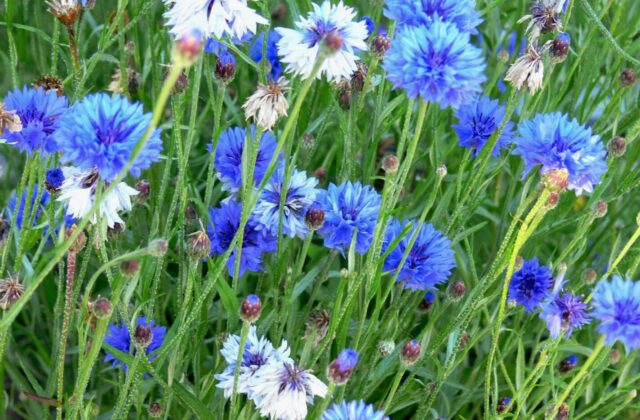
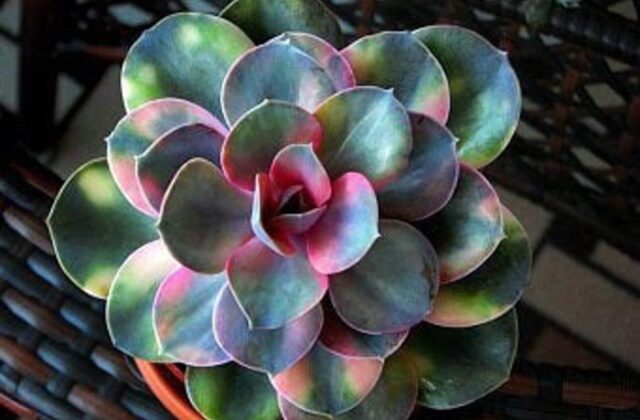
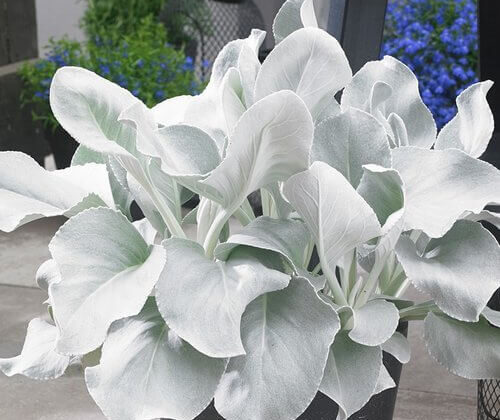

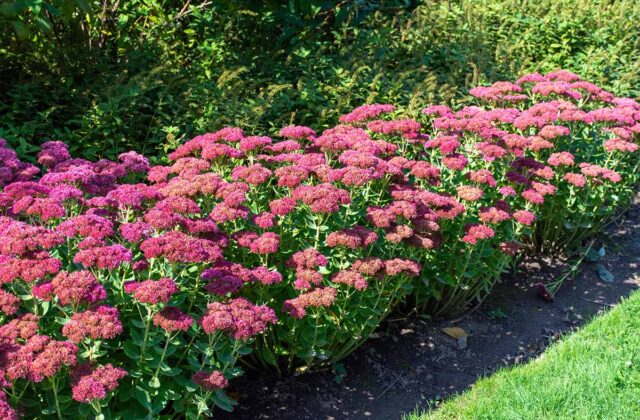
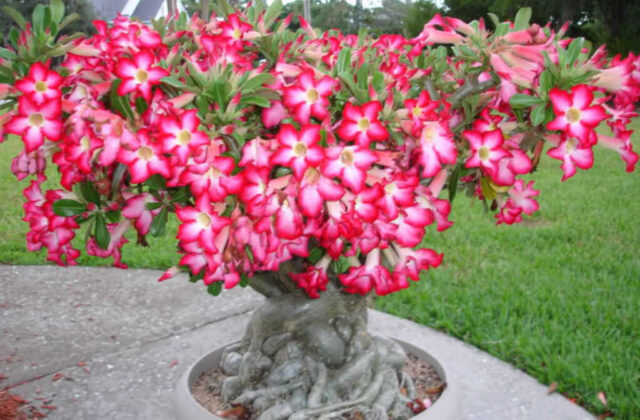
14 comments
I couldn’t resist commenting
xnxx
xnxx
tipobet porn
Howdy! I know this is kind of off topic but I was wondering which blog platform are you using for this site? I’m getting sick and tired of WordPress because I’ve had problems with hackers and I’m looking at options for another platform. I would be great if you could point me in the direction of a good platform.
Tonic Greens: An Overview Introducing Tonic Greens, an innovative immune support supplement meticulously crafted with potent antioxidants, essential minerals, and vital vitamins.
I have been absent for a while, but now I remember why I used to love this website. Thank you, I?¦ll try and check back more frequently. How frequently you update your site?
Attractive section of content. I just stumbled upon your website and in accession capital to assert that I acquire in fact enjoyed account your blog posts. Any way I’ll be subscribing to your feeds and even I achievement you access consistently rapidly.
Some truly good blog posts on this site, thanks for contribution.
hi!,I love your writing very a lot! share we keepup a correspondence extra approximately your articleon AOL? I require an expert in this house to unravel my problemMay be that is you! Taking a look ahead to see you
Hmm it appears like your site ate my first comment (it was super long) so I guess I’lljust sum it up what I wrote and say, I’m thoroughly enjoying your blogI as well am an aspiring blog blogger but I’m still new to the whole thingDo you have any tips for rookie blog writers?I’d definitely appreciate it
I have recently started a web site, the info you provide on this website has helped me greatly. Thank you for all of your time & work.
I have recently started a blog, the information you offer on this web site has helped me greatly. Thank you for all of your time & work. “Show me the man who keeps his house in hand, He’s fit for public authority.” by Sophocles.